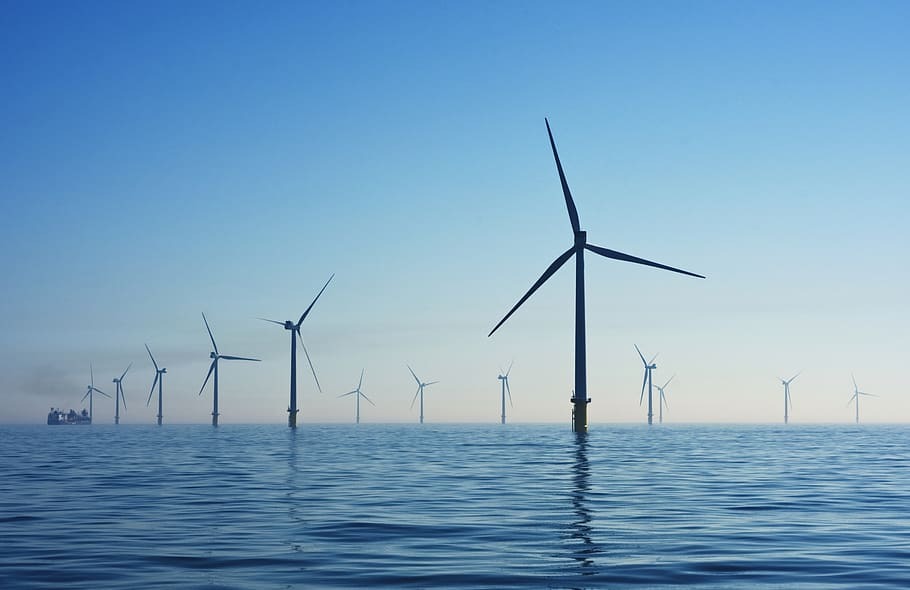Last year saw renewables records broken across the board as renewables produced nearly 37% of the UK’s power, according to new data released by the Department for Business, Energy and Industrial Strategy (BEIS).
In 2019, renewables generated a record breaking 36.9% of the UK’s electricity, it announced today (26 March). Of this, wind power contributed 20%, a further record, with 9.9% from onshore wind and 9.9% from offshore wind.
This amounted to 32TWh of generation from wind in 2019, the most ever recorded. Renewable electricity capacity grew to 47.4GW by the end of the year, a 6.9% increase (3.0GW) on a year earlier.
Across the board, low carbon generation increased in 2019, ensuring that renewables and nuclear together accounted for a record 54.2%. Nuclear provided 17.4%, while natural gas provided 40.9% and coal just 2.1%.
This growth in renewables have allowed greenhouse gas emissions to fall by 3.6% from 2018, and almost 28% since 2010.
Energy minister Kwasi Kwarteng welcomed the news, in particular during a period of uncertainty in the UK caused by the COVID-19 pandemic.
“These new figures show the extraordinary progress the UK has made in tackling climate change, with emissions falling 45% since 1990. With record-breaking levels of renewable electricity on the grid we are well-placed to build on these efforts in the months and years ahead, while continuing to support the economy through the coronavirus outbreak.”
Overall, electricity production in the UK showed a small decrease in 2019 compared with 2018, with 324TWh produced across the year.
Energy efficiency measures contributed to this, but were also offset by the transition to electric vehicles and electric heating, increasing demand in an effort to decarbonise.
RenewableUK’s deputy chief executive Melanie Onn said that the figures showed how radically the energy system is changing, “with low-cost renewables at the vanguard”.
“This will continue as we build a modern energy system, moving away from fossil fuels to reach net zero emissions as fast as possible. As well as wind, we’ll use innovative new technologies like renewable hydrogen and marine power, and we’ll scale up battery storage.
“Low-cost renewables are central to the government’s energy strategy and our sector will grow rapidly in the years ahead, as our domestic supply chain expands and we continue to seize multi-billion pound export opportunities around the world”.
BEIS’s statistics today follow reports in January that renewables were on the cusp of becoming the main energy source in the country.
Research firm EnAppSys found that in 2019, 104.8TWh of Britain’s electricity came from renewables, just shy of the 115.1TWh produced by gas-fired power stations.
National Grid meanwhile celebrated low carbon power sources over taking fossil fuels in Britain in January. It found that throughout the twelve months of 2019, 48.5% of the country’s power came from zero carbon sources, including wind farms, solar and nuclear energy, alongside energy imported by subsea interconnectors.
Throughout the same period, 43% of Britain’s electricity came from fossil fuels, predominantly gas and the remaining 8.5% was generated by biomass.






